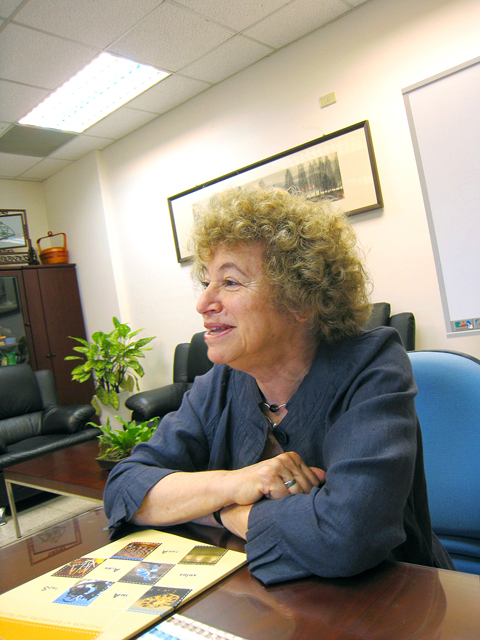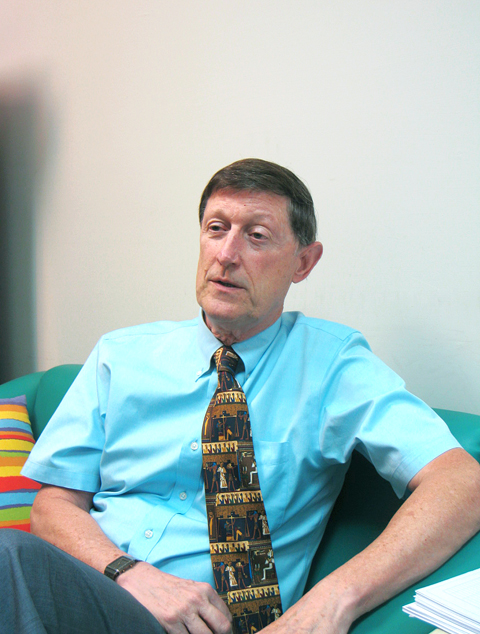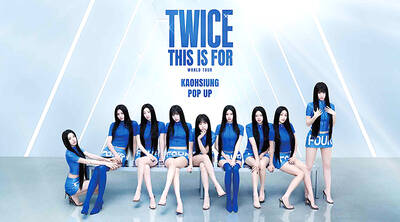Taipei Times (TT): What makes astronomy an important scientific field? What role do you think it plays in people’s lives?
Robert Williams: We live in a world where superstition plays a prominent role — for example, getting a cold by sleeping next to an open window, thunder being caused by the flapping of angel’s wings. I believe that scientific methods are the best vehicle for teaching people and for changing their minds about things.
Astronomy is the best science to introduce people into that type of thinking, because it is there for everyone to see and it is exciting. The quality of people’s lives are enhanced when they know the facts about every type of phenomenon, whether it is human relations, the food we eat or the universe we live in; it is important we understand ourselves.

PHOTO: TAIPEI TIMES, MEGGIE LU
TT: Tell us what you have been working on and why astronomy is interesting to you.
Williams: Spectroscopy is the study of radiation and matter as a function of wavelengths. It turns out that the type of radiation things emit varies, just like fingerprints. Spectroscopy is kind of like solving a crime scene through forensic means. For example, a nova outburst is where one star in a pair of binary stars loses mass to another star. As that mass falls onto the other star, it gradually heats it up to a point that nuclear fusion can take place. It’s an interesting phenomenon. You look into the sky, you see about 6,000 naked-eye stars, most of which are constant and appear century after century, but once in a while, some stars go “ka-blank” — why? If we are going to understand the universe, we need to understand why some stars blow up, while others are just sitting there.

PHOTO: TAIPEI TIMES, MEGGIE LU
Catherine Cesarsky: In the early part of my career I worked in high-energy astrophysics — events where there are big explosions, supernovae or black holes attracting matter at fast speeds. Cosmic rays have collisions with interstellar mediums — clouds between stars — and these collisions emit gamma rays. The study of gamma rays enables us to determine how much matter there is between stars.
In the second part of my career I developed an infrared instrument for a satellite — the ISOCAM camera onboard the Infrared Space Observatory of the European Space Agency [ESO]. With it we studied star formation, faraway galaxies, and we discovered very important things about the evolution of galaxies. For example, we discovered that in galaxies in the past, stars formed at much faster rates than they are now.
TT: With ESO, you collaborated with the Taiwanese team on the Atacama Large Millimeter/submillimeter Array (ALMA) Observatory [a space telescope composed of 66 giant antennas scheduled for completion in 2012 that involves collaboration between US, Canadian, EU, Japanese and Taiwanese scientists]. What are some of your observations?
Cesarsky: ESO has led the European part of the ALMA project since I was the ESO director-general. We talked to the Japanese, and quickly they brought in the Taiwanese. Meanwhile the Americans also made agreements with the Taiwanese, so Taiwan participates [in ALMA] both in the North America and the East Asia parts.
The Taiwanese team has been performing very well. Because they had just worked on the Submillimeter Wave Telescope [SMA], they were better prepared than many to do it. They have delivered very good prototypes that have been accepted as engineering models.
One of the recent important things that it has done is the integration of the receivers for the Japanese part of the project, which was done at the ALMA East Asia Front End Integration Center. Earlier this year, the receivers [the first device the signals reach at the giant telescopes] helped receive ALMA’s first signals from space [in a test run with Mars].
TT: As one of the world’s top female scientists, how do you think the field of science has evolved in terms of including women since you first started? What future changes do you wish to see?
Cesarsky: There are altogether more women in the field, but not overwhelmingly more. In my family, given my age, I had by far the major responsibility in raising my two boys, and I certainly missed opportunities. When I worked on cosmic rays in the US in my early 30s, the biggest competitor in terms of science were Russian scientists. I met a Russian scientist in Europe, who later won a Nobel Prize, and he said, “So, you are Cesarsky? I thought you were a grown woman!” I don’t think people are surprised now if a young woman comes to do with science; in most places women are better accepted than they used to be. However, the level of acceptance and the involvement of women in science vary enormously from country to country.
In the future I would be very happy if we don’t pay attention to whether a scientist is a man or a woman, ideally the ratio would reach 50-50. I want to see that it is made easier for women scientists to have a career and a family at the same time. My advice to aspiring young female scientists is to go for everything — you can have it all. Not having a family is not a solution at all to having a career. I certainly would never have gone without having children.
TT: What is the goal of the International Year of Astronomy 2009?
Cesarsky: The goal is to help as many people as we can to feel their place in the universe, including in countries where there is not yet astronomy. We want people to enjoy the beauty of the sky, and if possible to also understand that behind this beauty, there is much to discover. We are in the Golden Age of astronomy. Whereas just 15 years ago, we were only studying the universe close to us, we now have very sensitive instruments to study the whole history of the universe. We can now see very far away, which means we can see very far away in time.
Williams: I would say the two most important discoveries in the past were that the universe is expanding, and the discovery of the existence of planets around other stars. In a few hundred years, science will allow us to probe what happened before the Big Bang. And some day in the near future, we will discover Earth-like planets and begin characterizing them.

The Ministry of Foreign Affairs (MOFA) yesterday voiced dissatisfaction with the Comprehensive and Progressive Agreement for Trans- Pacific Partnership (CPTPP), whose latest meeting, concluded earlier the same day, appeared not to address the country’s application. In a statement, MOFA said the CPTPP commission had "once again failed to fairly process Taiwan’s application," attributing the inaction to the bloc’s "succumbing to political pressure," without elaborating. Taiwan submitted its CPTPP application under the name "Separate Customs Territory of Taiwan, Penghu, Kinmen and Matsu" on Sept. 22, 2021 -- less than a week after China

THE GOOD WORD: More than 100 colleges on both sides of the Pacific will work together to bring students to Taiwan so they can learn Mandarin where it is spoken A total of 102 universities from Taiwan and the US are collaborating in a push to promote Taiwan as the first-choice place to learn Mandarin, with seven Mandarin learning centers stood up in the US to train and support teachers, the Foundation for International Cooperation in Higher Education of Taiwan (FICHET) said. At the annual convention of the American Council on the Teaching of Foreign Languages held over the weekend in New Orleans, Louisiana, a Taiwan Pavilion was jointly run by 17 representative teams from the FICHET, the Overseas Community Affairs Council, the Steering Committee for the Test of Proficiency-Huayu, the

A home-style restaurant opened by a Taiwanese woman in Quezon City in Metro Manila has been featured in the first-ever Michelin Guide honoring exceptional restaurants in the Philippines. The restaurant, Fong Wei Wu (豐味屋), was one of 74 eateries to receive a “Michelin Selected” honor in the guide, while one restaurant received two Michelin stars, eight received one star and 25 were awarded a “Bib Gourmand.” The guide, which was limited to restaurants in Metro Manila and Cebu, was published on Oct. 30. In an interview, Feng Wei Wu’s owner and chef, Linda, said that as a restaurateur in her 60s, receiving an

Kaohsiung Mayor Chen Chi-mai (陳其邁) on Monday announced light shows and themed traffic lights to welcome fans of South Korean pop group Twice to the port city. The group is to play Kaohsiung on Saturday as part of its “This Is For” world tour. It would be the group’s first performance in Taiwan since its debut 10 years ago. The all-female group consists of five South Koreans, three Japanese and Tainan’s Chou Tzu-yu (周子瑜), the first Taiwan-born and raised member of a South Korean girl group. To promote the group’s arrival, the city has been holding a series of events, including a pop-up